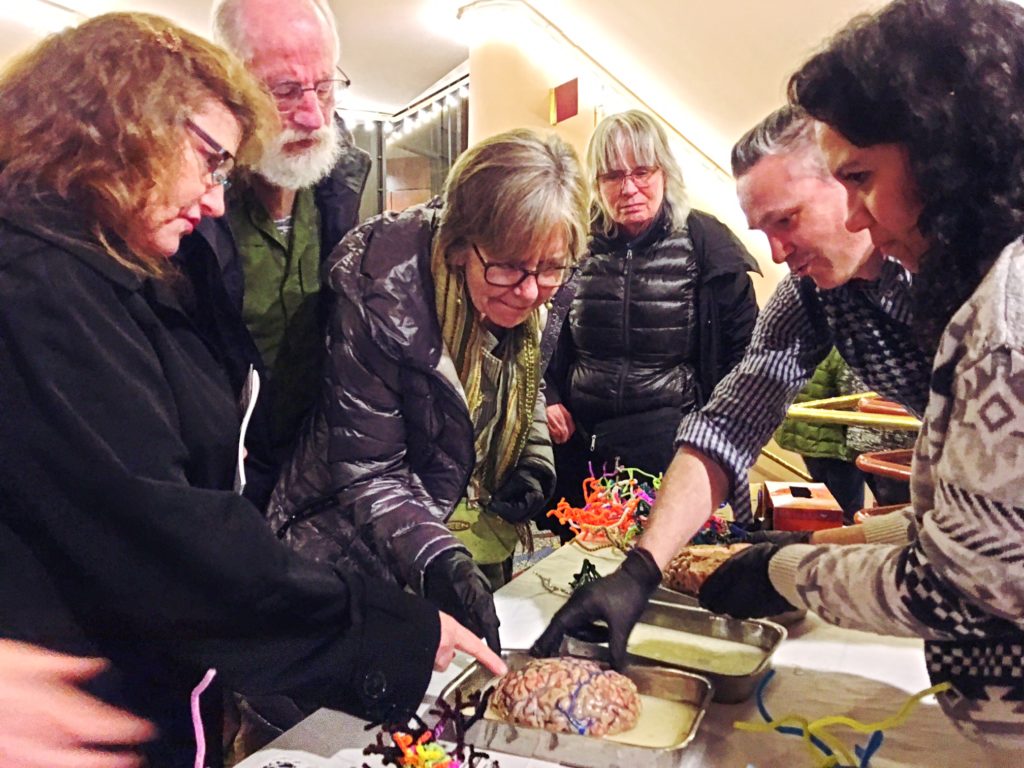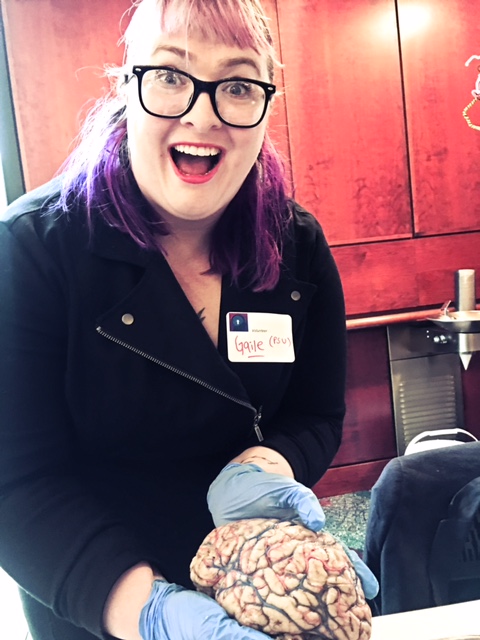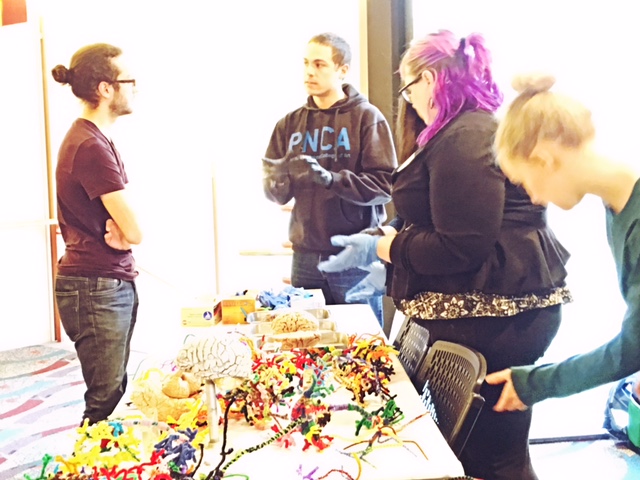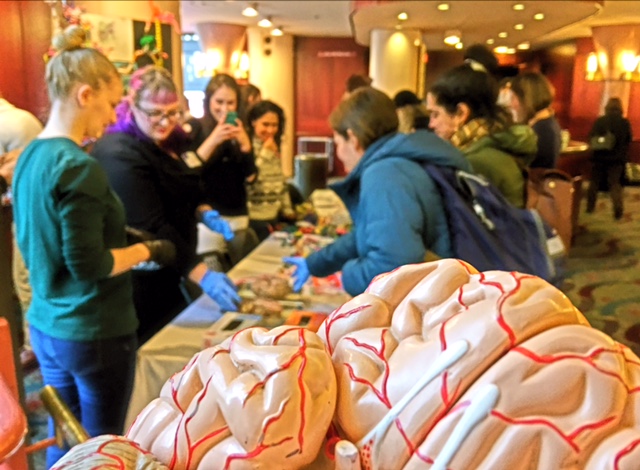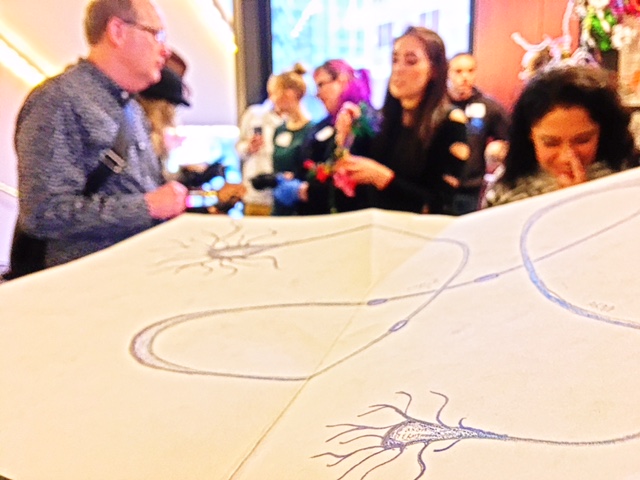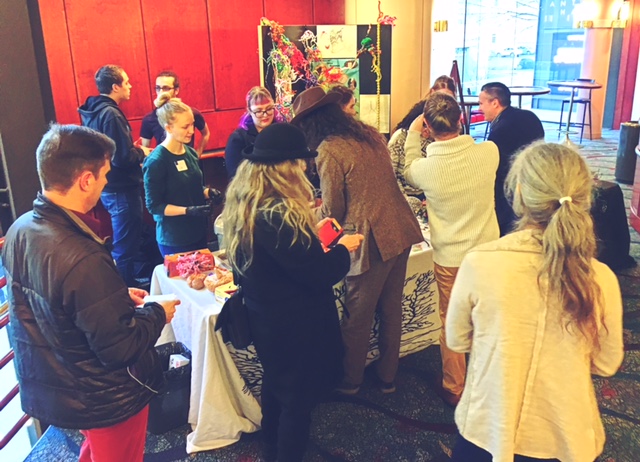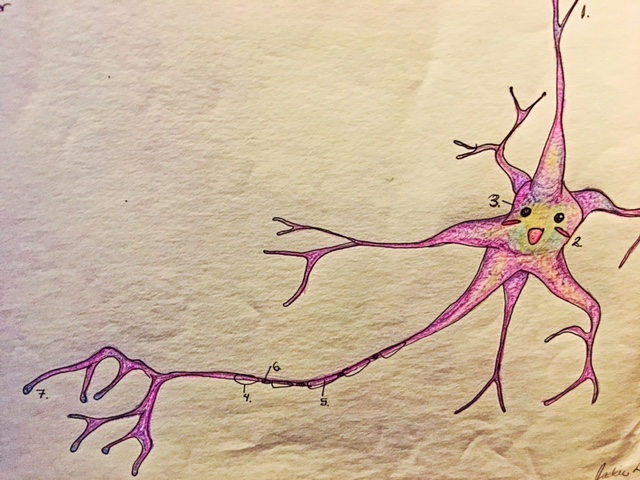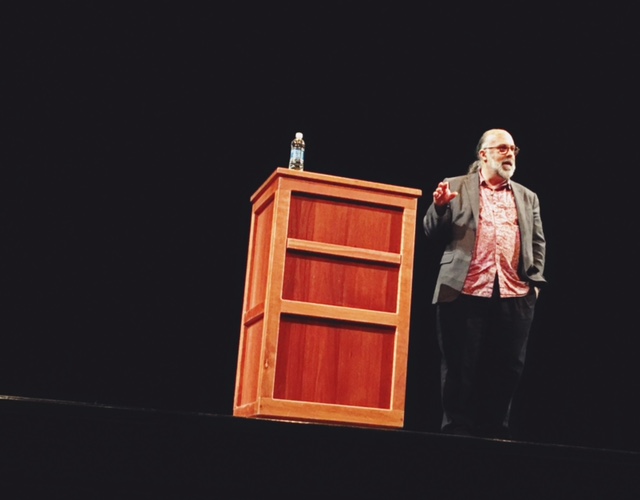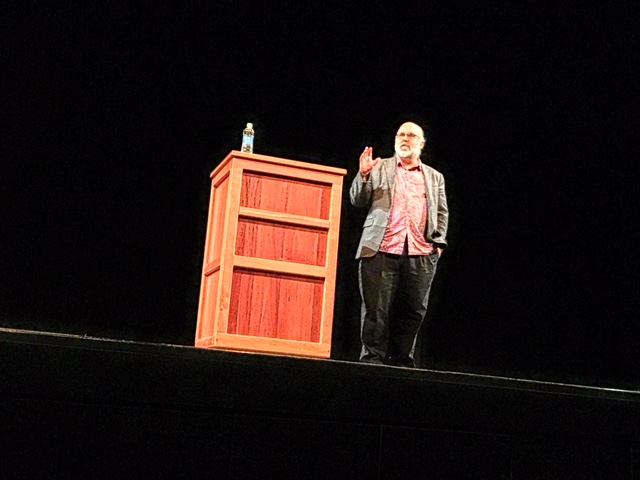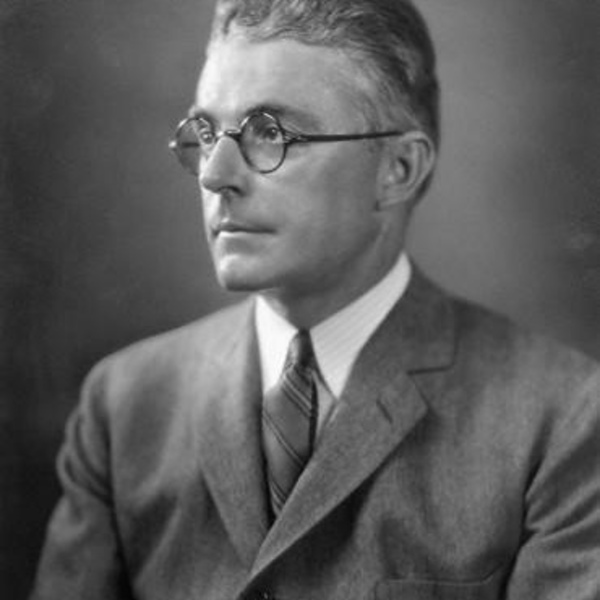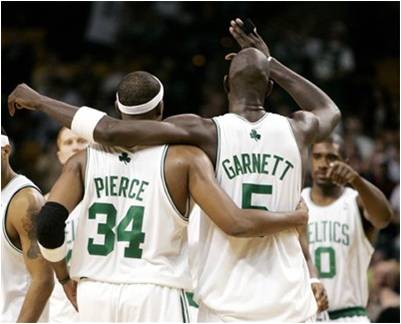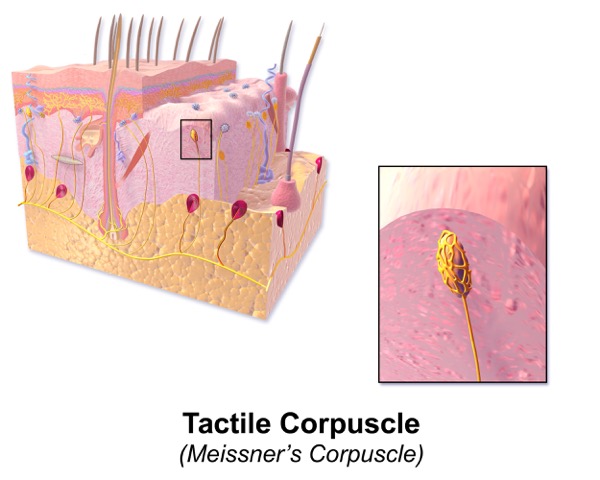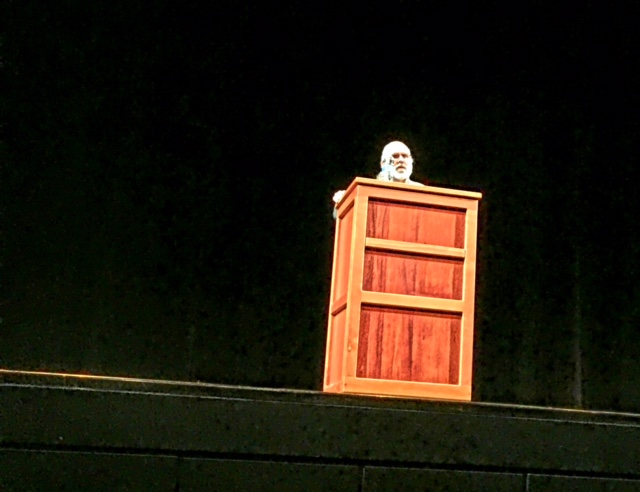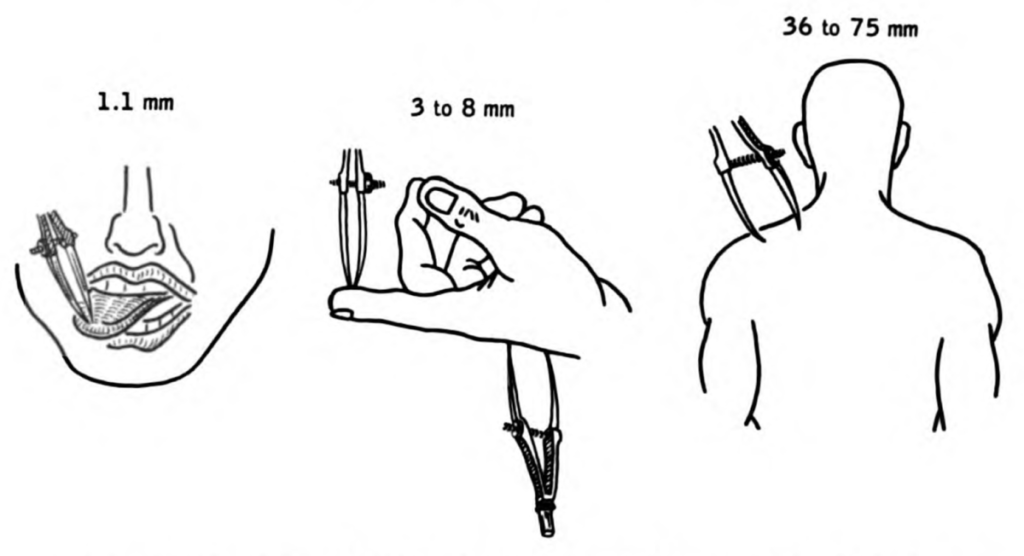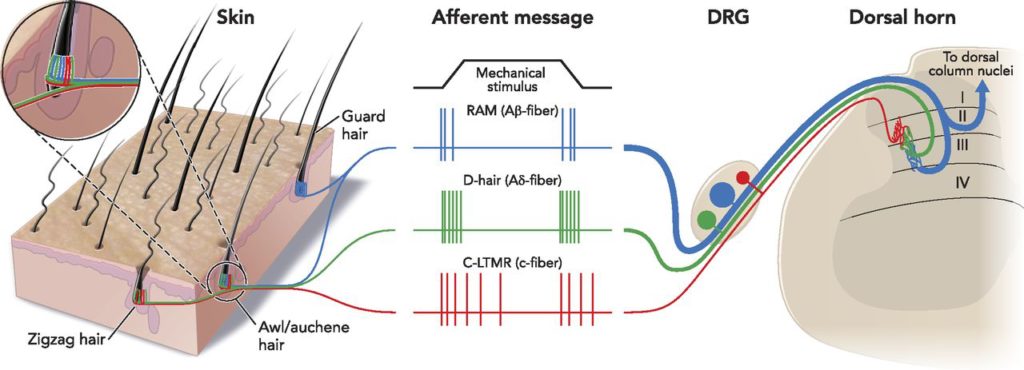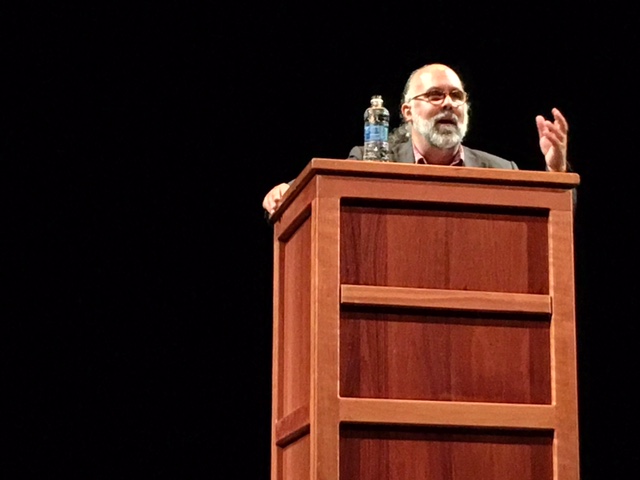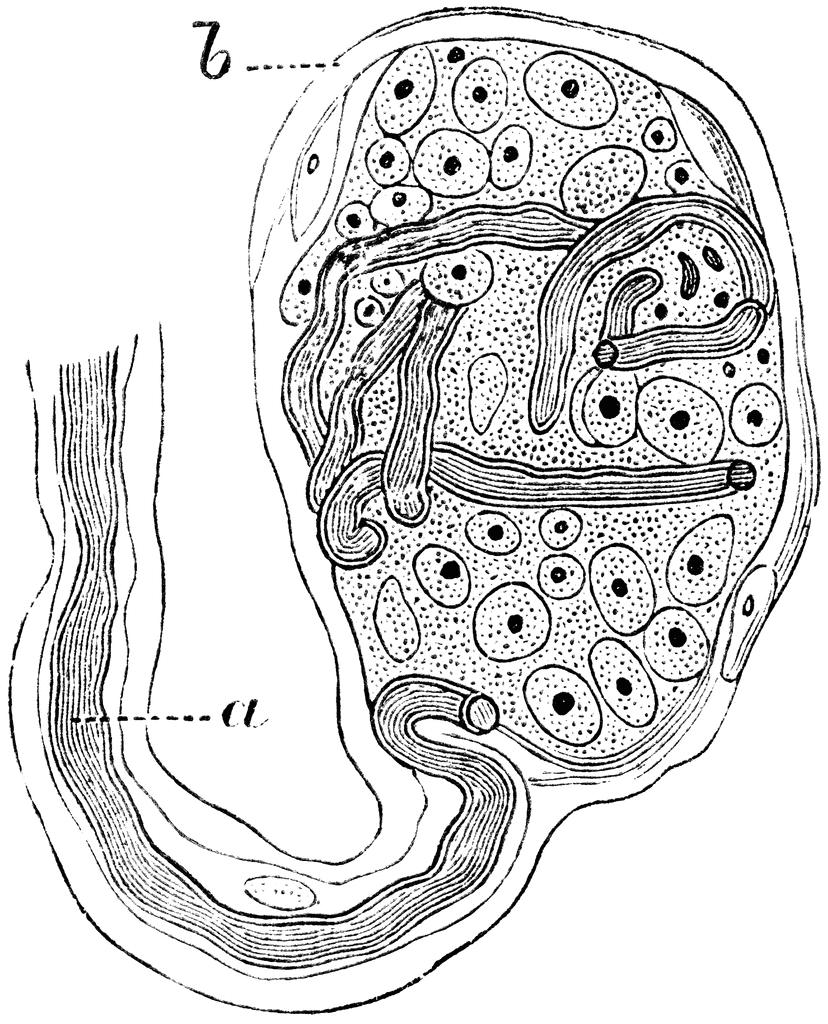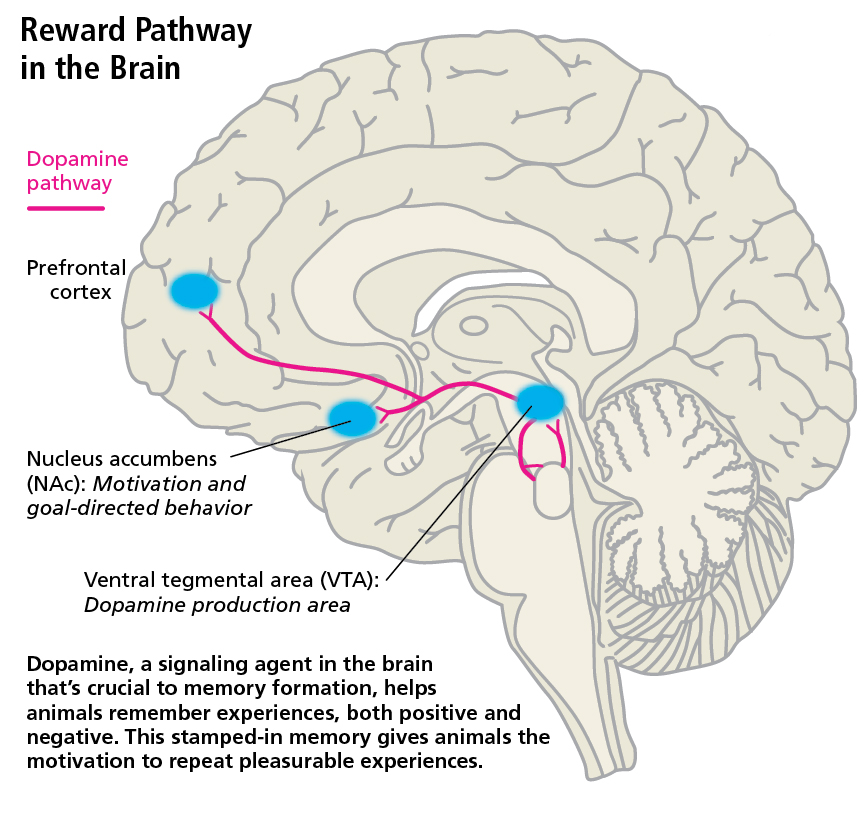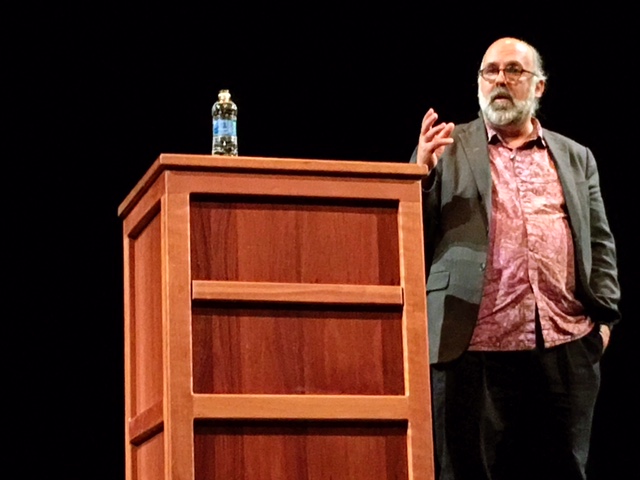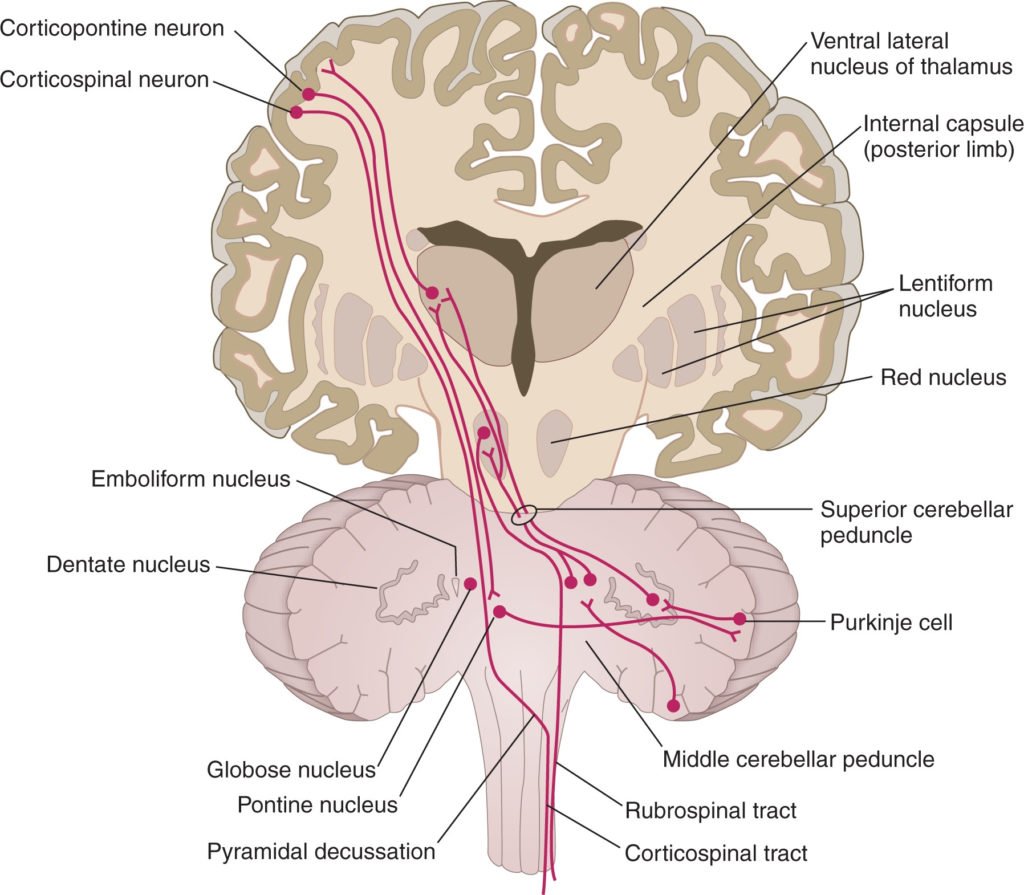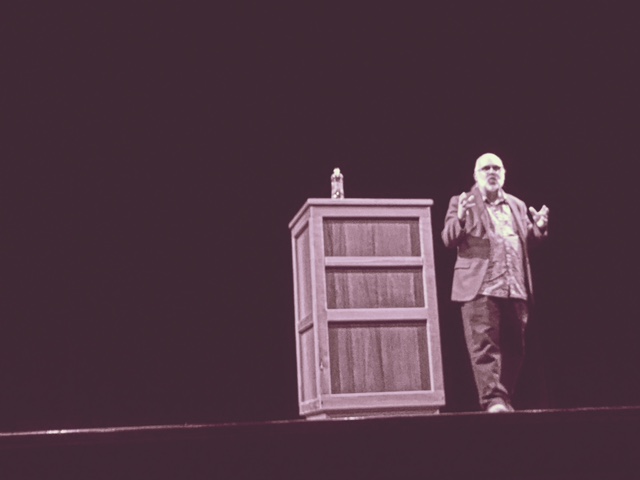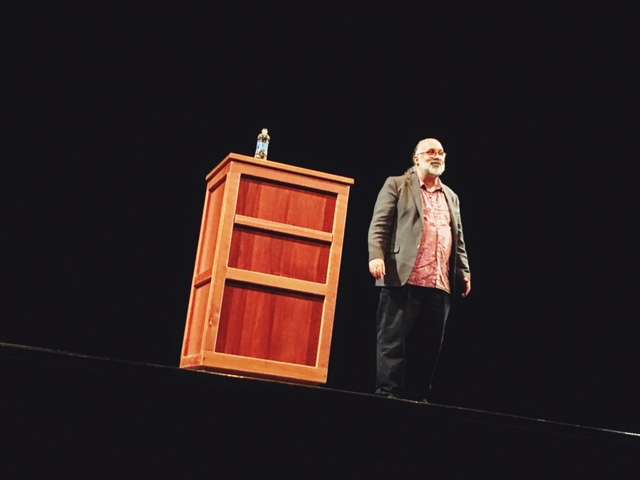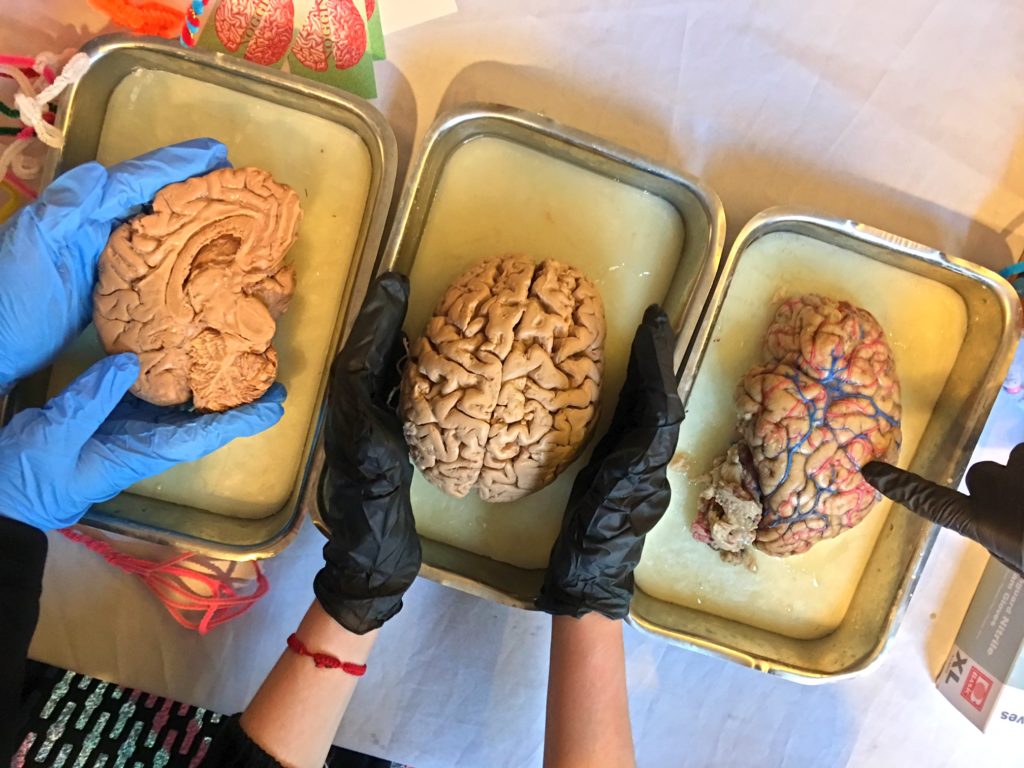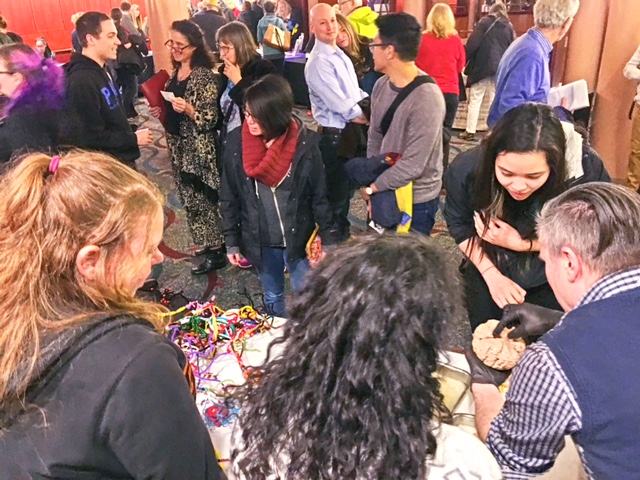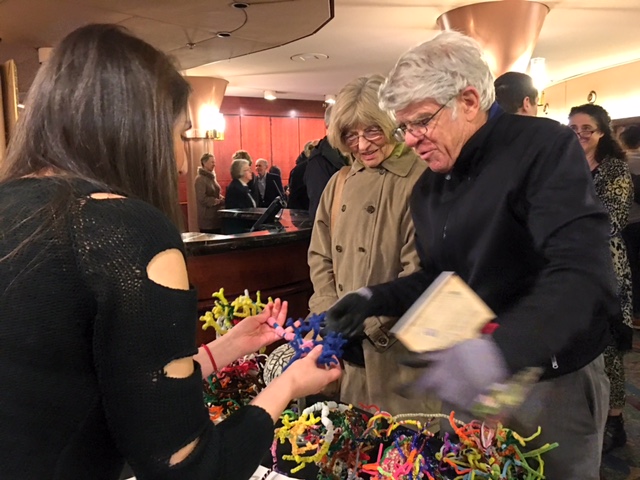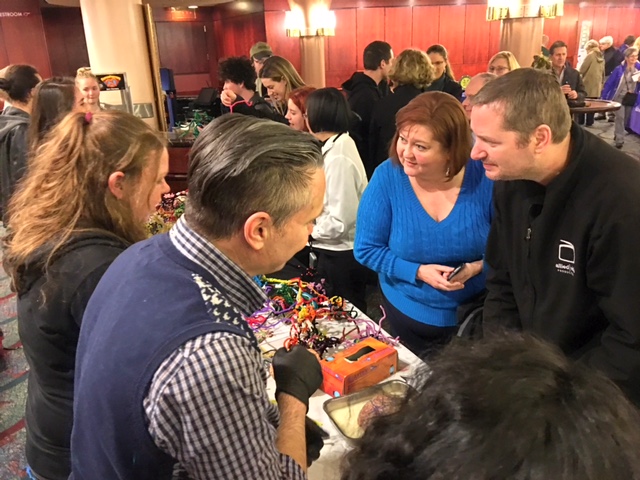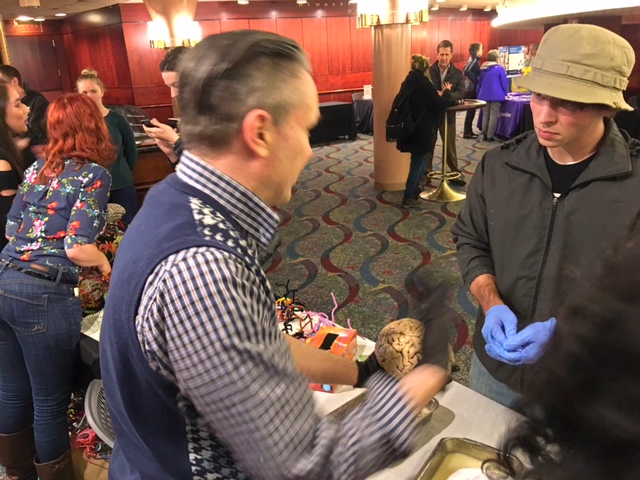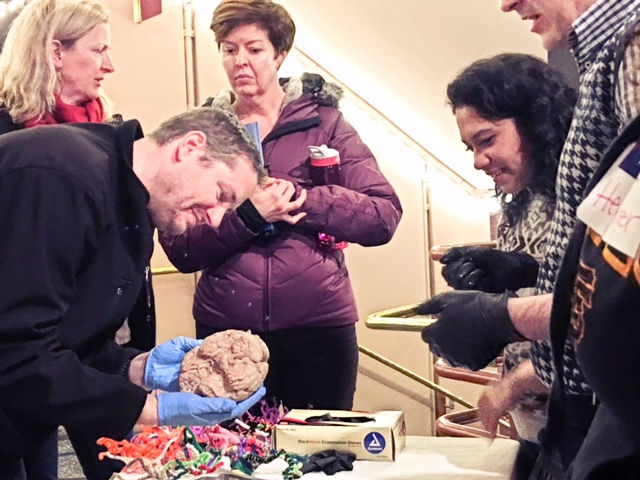Touch is just one of Aristotle’s original “five senses,” but it involves much more than gentle pressure perceived when holding an apple, or tapping a screen. Our “somatosensation” (sensation from the body) encompasses many specific impressions – heat, cold, hair deflection, poke – each dependent on a specific neuronal “micro-machine.” It is also utterly essential for healthy human development…
Thanks to the generosity of the OHSU Brain Institute, our NW Noggin volunteers returned to Portland’s Newmark Theater this week to hear David Linden, an expert on somatosensation and the author of Touch: The Science of Hand, Heart and Mind. Dr. Linden is a professor in the Solomon H. Snyder Department of Neuroscience at Johns Hopkins University, former editor of the Journal of Neurophysiology, a recognized authority on synaptic plasticity in the cerebellum, and the author of several popular books on science…
LEARN MORE: Why Is It Important To Be Touched?
LEARN MORE: Fingertips To Hair Follicles: Why ‘Touch’ Triggers Pleasure And Pain
Our volunteers included Gaile Parker, Heather Hamilton, Joella Deal, Andrea Anaya, Jacob Schoen, Sulema Rodriguez, Brandon Forry and Erik Brunken from Portland State University, who eagerly answered questions about brains and brain research on the Newmark’s second floor lobby before the talk began…
We also introduced our newly donated left hemisphere from the fine folks at BioGift Anatomical..!
LEARN MORE: A BioGift of Brains
Dr. Linden began his presentation by emphasizing the centrality of touch in human experience, and its intrinsic ties to emotion. It’s embedded in our language – someone emotionally inept is “tactless,” for example, and we dislike that “slippery” politician (“you know which one,” he said).
“Touch is not optional for human development,” Dr. Linden explained. You can grow up without retinal rods and cones, and be blind but normal; you will be deaf without cochlear hair cells, but also become a functioning adult. But if deprived of touch during critical developmental periods, “a disaster unfolds.” Without loving touch early in life, neuropsychiatric, digestive, and immune problems will manifest, and persist…
LEARN MORE: The importance of touch in development
LEARN MORE: Role of the mother’s touch in failure to thrive: a preliminary investigation
John Watson, one founder of the Behaviorist approach in Psychology, was apparently not a fan of touch. Dr. Linden read some of his advice to new parents: “Never hug and kiss” your children. “Never let them sit on your lap. If you must, kiss them once on the forehead when they say good night. Shake hands with them in the morning. Give them a pat on the head if they have made an extraordinary job of a difficult task.”
LEARN MORE: John B. Watson’s Advice on Child Rearing: Some Historical Context
LEARN MORE: He Was an Author Only a Mother Could Love
No touching policies for coaches and teachers, suggested Dr. Linden, may have had unintended negative consequences. He cited a study which found that NBA teams exhibiting more “celebratory” touch in the first half of the season did better in the second! Touch is not just for “hippies and time wasters,” he added, but “connects people socially.” People gently touched by waitstaff leave bigger tips, and doctors who touch their patients receive better ratings…
LEARN MORE: Tactile communication, cooperation, and performance: an ethological study of the NBA
LEARN MORE: The Neurobiology Shaping Affective Touch: Expectation, Motivation, and Meaning in the Multisensory Context
Touch tells us that “we’re on the same team.” This critical sense, said Dr. Linden, “is weird, complex, often counter-intuitive,” made up of many distinct inputs and perceived sensations, and creates “our unique human experience.” Somatosensation, for one thing, can inform our brain about where we are, how we’re sitting, or standing, or moving, thanks to specialized mechanoreceptive neurons in our skin, muscles and joints…
Mechanoreceptors respond to mechanical manipulation, and different areas of our bodies harbor different kinds, embedded at different levels. Skin, for example, can be hairy (this includes fine hairs, like those on your cheek), or hairless – what’s known as glabrous. Glabrous skin, like that found on your fingertips and soles of your feet, includes specialized neurons sensitive to light pressure (Meissner’s corpuscles), deeper poking (Pacinian corpuscles), and detailed textural qualities of surfaces (Merkel’s receptors)…
Different areas of your body also have different receptor densities. Our glabrous fingertips, for example, are packed with Merkel’s receptors sensitive to texture. If you unfold a paperclip and touch either one end or two to someone’s finger, they can easily tell the difference. But if you try the same test (the two point discrimination task) on their upper arm, two points will feel just like one!
LEARN MORE: Our sense of touch – Two-point discrimination
If you take 1000 women, suggested Dr. Linden, and 1000 men, and test their fingertip spatial acuity with a paperclip – the women on average will do better than men. Dr. Linden noted some hypotheses put forth to explain this; for example, maybe women have softer skin! However, fingertips come in a range of sizes, and there is tremendous individual variability in spatial acuity (and the use of moisturizer). Apparently, there is a relatively fixed number of Merkels, and in bigger fingers they are more spread out. Men with much smaller hands (“know anyone?,” asked Dr. Linden) discriminate as well as average women…
LEARN MORE: Diminutive Digits Discern Delicate Details: Fingertip Size and the Sex Difference in Tactile Spatial Acuity
But “touch” is more than textural discrimination, light pressure, poking, muscle stretch and joint extension. Somatosensation can also signal pleasure, danger, or threat through additional cells that detect damage to tissue (nociceptors), temperature (thermoreceptors), itch (itch receptors) and “social touch”…
For example, in hairy skin, there are specialized mechanoreceptive neurons wrapped about our hairs, which respond to hair deflection and skin pressure. These are known as C tactile fibers (or C-LTMRs, low-threshold mechanoreceptive receptors), and they are apparently involved in the detection of “social touch…”
LEARN MORE: Hairy Sensation
It turns out that people the world over prefer a certain pressure and speed of caress (around 3cm/sec), and from warm skin, which generates maximal response from those C tactile fibers. Dr. Linden had us turn to our neighbors to deliver a caress on the arm: too fast didn’t feel that great, while too slow actually feel creepy!
LEARN MORE: The Sensory Neurons of Touch
LEARN MORE: Touch Satiety: Differential Effects of Stroking Velocity on Liking and Wanting Touch Over Repetitions
LEARN MORE: Tactile C fibers and their contributions to pleasant sensations and to tactile allodynia
LEARN MORE: A Loving Touch
Dr. Linden also explained how our own social expectations play a large role in how we perceive detected stimuli. He told the story of a husband initially exclaiming “ugh – what smells like farts?” When told by his wife it’s the expensive cheese he just bought, he switches quickly to “Oh – what smells so good?”
Dr. Linden clearly loves stories, and to further illustrate the importance of context to individual interpretation of sensory inputs, he read us a particularly dramatic tale of a couple in bed, with one partner initially convinced he was gently squeezing his lover’s nipple – until the nipple came off in his hand! Suddenly the “nipple” felt unusually spongy, and waxy, and “he realized (with some relief) that it was in fact a foam earplug that had come loose and landed on her chest..!”
This naturally brought us to nipple sensations, and genital sensations, which are clearly unique in terms of perceived touch, and Dr. Linden admitted the continuing uncertainty over whether different mechanoreceptors are involved. As a biologist, he noted, “this is embarrassing” – but the answer is still maybe. There are nerves in these regions that appear somewhat distinct, but which may be a form of Meissner’s corpuscle, known as mucocutaneous end organs (even better in German, said Dr. Linden: the “end-bulbs of Krause!”).
LEARN MORE: Ultrastructure of the human mucocutaneous end organ
Dr. Linden took great pleasure in relating research on brain responses during orgasm – an experience somewhat difficult to have while trying to remain still in the cramped confines of a PET scanner! PET (positron emission tomography) relies on the decay of short-lived radio-labeled blood-borne compounds, which must be injected within one minute of measurement…
IMAGE SOURCE: Sex on the brain: Orgasms unlock altered consciousness
LEARN MORE: This is what your brain looks like during an orgasm
So, according to Dr. Linden, a subject is crammed in a scanner, with a rectal probe for measuring temperature fluctuations to confirm orgasm, with “a bunch of dweebs like me standing around with our clipboards,” waiting until she says “I’m feeling close, so radio-labelled water can be injected, hopefully a minute before it occurs!”
Orgasm-related brain changes include enhanced activation of the genital mapping area in primary somatosensory cortex (S1) in the parietal lobe, which receives much of the mechanoreceptive input, and the posterior insula, which receives more emotionally salient somatosensory input. There is also suppression of amygdala (a subcortical nucleus critical for vigilance and fear), and a big increase in the VTA and nucleus accumbens, both important subcortical components of motivational networks in the brain…
The frontal lobes – areas involved in complex decision-making, including the consideration of social consequences, are also suppressed. “Don’t pick mutual funds during orgasm” was Dr. Linden’s sage advice!
Dr. Linden discussed, partly through stories, how expectations influence other aspects of somatosensory perception, including pain, and how an appreciation for the underlying circuitry of the brain can help explain additional touch-driven behavior. He described a “bathroom door” game between two children, Nathalie and Jacob, who despite promising to push back each time with equal force inevitably increase the force used until someone gets hurt. Why..?
Whenever you voluntarily move your body, your brain sends electrical commands from primary motor cortex (M1) in your frontal lobes to motor neurons in your spinal cord via the corticospinal tract. However, M1 also sends a “copy” of its output to the cerebellum (first via the cortico-pontine tract to the brainstem), which converts this signal into inhibitory instructions to primary somatosensory regions to preemptively cancel out some of the expected sensation!
This is one reason why you generally can’t tickle yourself, but also why the door pushing game gets out of hand. When Natalie uses 2 units of force, explained Dr. Linden, Jacob feels those 2 units; but when he responds with 3 units that he feels as 2, but which Natalie feels as 3, she naturally responds with 3 – “and thus the situation escalates inevitably to Armageddon…”
This was a fascinating and compelling talk, and our volunteers returned to the Noggin table to discuss the regions involved in somatosensation with curious lecture attendees…
Many thanks to Kate Stout of the OHSU Brain Institute for welcoming us to another lecture!



